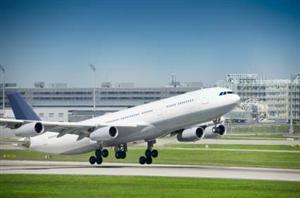Hypothesis
An aircraft will make more noise during take off than during landing.
Overview
Type of aircraft noise
Aircraft noise can be heard during the taxi stage (aircraft moving on runway), take off, when the aircraft is flying overhead and when it is landing. The noise from an aircraft is amounts to noise pollution than can be a great nuisance and cause health problems for residents living close to an airport. The types of noise generated by an aircraft are listed below:-
Noise due to aerodynamics is caused by the flow of air across the surface of the airplane. The air flow causes the extremely rapid compression and expansion of the surrounding air resulting in noise. This noise will increase as the aircraft speed increases. It will also be higher pitched at lower altitudes due to higher air pressure.
Noise from jet engines is the main source of noise during take off and landing. The noise from a jet engine is proportional to the speed at of the jet during take off and landing.
Aircraft system noises are noises that origin within the cabin and the cockpit of the aircraft. This noise is from the power unit which generates the power to start the aircraft engines and provide the electricity to operate the electronics inside the aircraft.
Scientific Terms
Aerodynamics, compression, expansion, airflow, decibel meter
Conclusion
The hypothesis that aircraft will generate more noise during take off rather than during landing is proven to be true. The noise during take off is about 10 to 12 dB louder than the noise generated during landing.
Residents who live near an airport are normally affected by the noise of an aircraft during taking off, noise of aircraft landing and noise of low flying aircrafts. The problems faced by these residents include sleep deprivation, hearing problem, psychological problems and even cardiac disorder. Students and office workers living in these areas may face problems concentrating.
New technologies are being developed by aircraft manufacturers to reduce noise pollution. New standards are also being developed to measure noise from various types of aircraft. Local governments are also creating new laws to limit the noise levels near airports.
Also consider
The experiment can be repeated by taking the measurement at night.
Try to repeat the experiment when it is raining and observe how this affects your results.
References
Aircraft noise - http://en.wikipedia.org/wiki/Aircraft_noise
Aircraft noise - http://www.flyfrompti.com/ptipart150/AircraftNoise.htm
Related videos
Hey there! Here are some awesome videos about this science project that we think you'll really like. They're not only super fun, but they'll also help you learn more about the science behind the project. So sit back, relax, and get ready to have some fun!!




